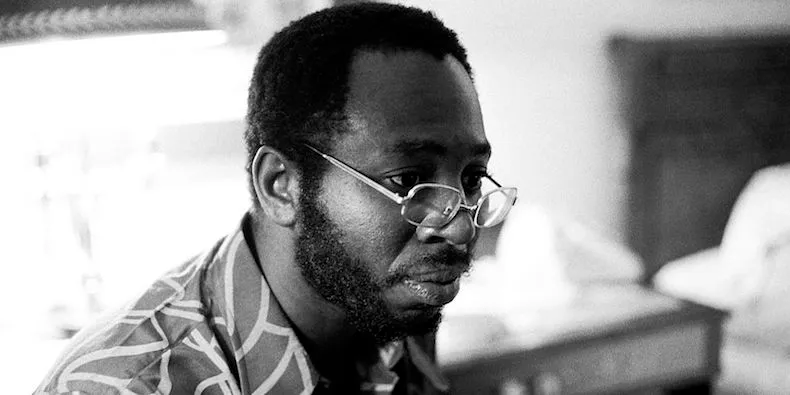Curtis Mayfield Age, Date Of Birth, Bio, Family And Net Worth
Curtis Mayfield: Age, Date of Birth & other info
Curtis Mayfield, an icon in American music, is best known for his distinctive sound, socially conscious lyrics, and contributions to the genres of soul, funk, and R&B. As a groundbreaking musician, producer, and songwriter, his impact on the music industry continues to resonate, and his legacy remains influential today.
- Age: 57 years
- Date of Birth: June 3, 1942
- Birth Place: Chicago, Illinois
- Weight: 160 pounds (73 kg)
- Height: 5 feet 10 inches (178 cm)
- Net Worth: $10 million

Early Life and Family Background
Curtis Lee Mayfield was born on June 3, 1942, in Chicago, Illinois. He was raised in the Cabrini-Green housing projects on the North Side of Chicago, an environment that would later inform much of his music, especially in its social and political themes. Mayfield’s upbringing in one of the most economically disadvantaged neighborhoods in the country played a significant role in shaping his worldview and musical output.Curtis was the second youngest of five children in his family. His mother, who was a strong influence on his life, encouraged him to pursue music from an early age. Curtis was introduced to the world of music by his mother, who bought him his first guitar when he was just 7 years old. His father, on the other hand, was less involved, as he had left the family when Curtis was still a child. This left Curtis and his siblings to grow up with their mother in a community struggling with poverty, but with a rich cultural backdrop that exposed him to a variety of musical influences.As a young boy, Curtis attended the Jesse Owens Elementary School in Chicago, where he developed a deep love for music. He later attended the DuSable High School, a school well known for its nurturing of African American musical talent. Curtis Mayfield’s early exposure to gospel, blues, and jazz made a lasting impression on him, as did the works of prominent African American artists and performers who came before him.
Rise to Fame: Musical Career and Contributions
Curtis Mayfield’s musical journey began in earnest during his teenage years when he joined the group The Roosters in the late 1950s. By 1958, at the age of 16, Mayfield’s musical talent was already catching the attention of local musicians. He soon became a member of The Impressions, a Chicago-based gospel and R&B group. The band underwent several name changes before settling on “The Impressions.” The group initially found success in the early 1960s, when they signed with the ABC-Paramount Records label.The Impressions gained popularity with their uplifting, soulful sound that often conveyed messages of hope, unity, and faith. Curtis Mayfield’s role as the lead guitarist and primary songwriter was critical to the group’s rise. His first major songwriting success with the Impressions was the hit single “For Your Precious Love,” released in 1958, a song that became a classic soul ballad.In the 1960s, The Impressions continued to achieve success with songs like “People Get Ready” (1965), a song that has since become one of Mayfield’s signature tracks. “People Get Ready” is widely considered an anthem of the civil rights movement, and it exemplified Mayfield’s growing focus on social justice themes. His music not only appealed to black audiences but also resonated with broader societal issues of race, inequality, and empowerment.Mayfield’s songwriting was particularly powerful in addressing the African American experience, incorporating themes of resilience and unity. He was deeply aware of the struggles faced by African Americans in the 1960s, and his music began to reflect this awareness. Throughout his career, Curtis Mayfield would be known for his blending of personal, political, and spiritual themes within his songs.
Solo Career and Innovating the Sound of Soul and Funk
In 1970, Curtis Mayfield left The Impressions to embark on a solo career. His departure was a pivotal moment in his career, as he was ready to explore his own artistic vision and expand his musical horizons. His first solo album, Curtis (1970), was a critical and commercial success. It showcased his ability to blend soul and funk with a socially conscious message. The album featured songs like “Move On Up,” a lively anthem that encouraged listeners to strive for personal and collective progress, and “Don’t Worry (If There’s a Hell Below We’re All Going to Go),” which was a pointed commentary on systemic oppression and political corruption.Curtis Mayfield’s solo work continued to evolve in both its sound and its subject matter. In 1972, he released Superfly, the soundtrack for the film of the same name. Superfly became one of Mayfield’s most iconic works, solidifying his reputation as both a talented musician and a masterful composer for film. The soundtrack’s hit singles, like “Superfly” and “Pusherman,” offered a gritty, street-level perspective on the challenges of life in urban America, addressing themes of drug dealing, survival, and resistance.The success of Superfly not only enhanced Mayfield’s career as a musician but also as a cultural figure. He became one of the leading voices in the genre of blaxploitation cinema, and his music became associated with the genre’s larger cultural moment, which included themes of black empowerment and social change. This period saw Curtis Mayfield combine the funk grooves and smooth soul vocals for which he had become famous with sophisticated orchestration and cinematic storytelling.Mayfield’s contributions went beyond his own albums. As a producer, he worked with several other artists, helping to shape the sound of the era. His influence extended to other musicians and producers, inspiring a new generation of artists. His production work helped create some of the most iconic R&B and soul records of the 1970s.
Personal Struggles and Later Life
While Curtis Mayfield’s career flourished in the 1970s, his personal life saw significant challenges. The 1980s marked a period of physical hardship for Mayfield. In 1990, he was tragically paralyzed from the neck down after a lighting rig fell on him during a concert in Brooklyn, New York. Despite the accident, Mayfield’s spirit remained unbroken. He continued to create music and even recorded a final album, New World Order (1996), which reflected his ongoing commitment to social issues and his resilience in the face of adversity.Mayfield’s personal life was also marked by several relationships. He was married twice and had several children. His first marriage was to Ethel “Lillian” Mayfield, whom he had three children with. After their divorce, he remarried Althea Mayfield, with whom he had another two children. Mayfield’s family was important to him, and he often referred to his children as a source of inspiration.His accident in 1990 meant that Curtis Mayfield could no longer perform live, but he maintained his influence in the music industry by continuing to write and produce songs. His contribution to the world of music continued through collaborations with younger artists and his recognition as one of the genre’s most influential figures.
Legacy and Death
Curtis Mayfield passed away on December 26, 1999, at the age of 57, after suffering from complications related to his paralysis. His death marked the end of an era for soul, funk, and socially conscious music. However, his legacy lives on in the music he created, which continues to inspire musicians and activists around the world.Mayfield’s influence extends well beyond the realm of music. His commitment to social justice and his unapologetic dedication to telling the truth through his music have made him a cultural icon. His songs, especially those from his solo career, remain integral parts of the soundtrack of African American life in the 20th century.
Net Worth
At the time of his death in 1999, Curtis Mayfield’s net worth was estimated to be around $10 million. This amount reflects not only his successful career as a musician and songwriter but also his contributions as a producer. His wealth was largely derived from album sales, royalties, and performances, though after his accident, his income sources shifted primarily to royalties and music licensing.In the years following his death, Mayfield’s estate continued to earn revenue, largely due to the enduring popularity of his music and his influence on contemporary artists. His songs have been covered by a wide array of musicians and featured in numerous films, TV shows, and commercials. This ongoing relevance in popular culture has allowed Mayfield’s estate to continue profiting from his work.
Conclusion
Curtis Mayfield was a visionary artist whose work transcended the boundaries of music. From his beginnings in the Cabrini-Green housing projects to his rise as one of the most influential voices in soul and funk music, Mayfield’s career was marked by both artistic brilliance and a deep commitment to social justice. His contributions to the music industry and to the cultural landscape as a whole remain indispensable. Curtis Mayfield’s work continues to inspire new generations of artists and activists, making him a timeless figure in the history of American music.




